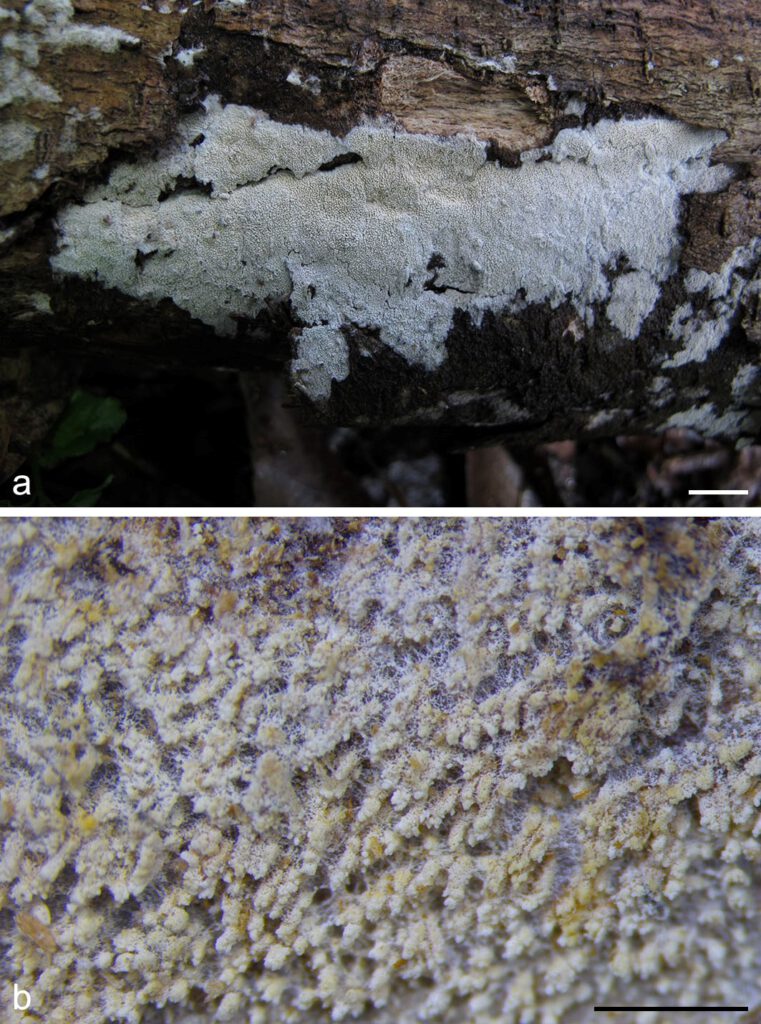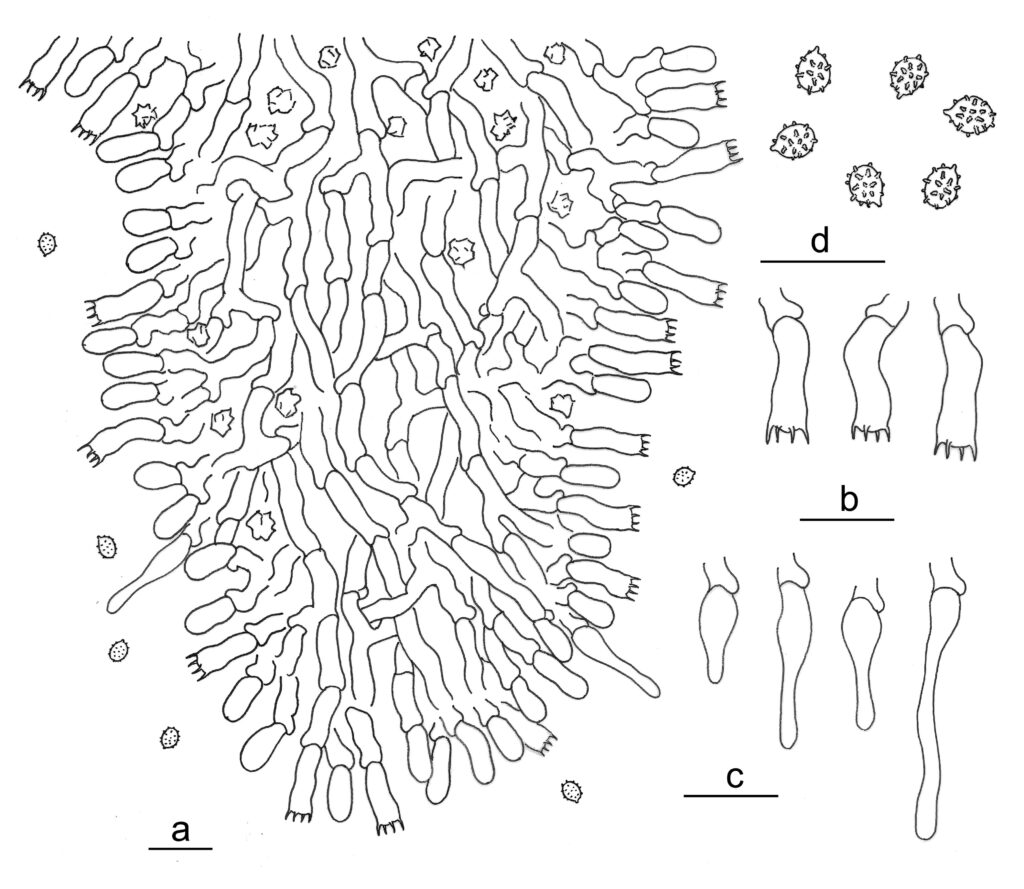Trechispora chaibuxiensis
MycoBank number: MB 559885; Index Fungorum number: IF 559885; Facesoffungi number: FoF 12864;
Description
Basidiomes annual, resupinate, effused, thin, soft and fragile, easily separated from substrates, up to 5 cm long, 2 cm wide. Hymenophore odontioid with numerous small aculei, sometimes fertile at the apex of the aculei, cream to straw-yellow when fresh, straw-yellow when dry, up to 0.3 mm long. Margin white, fimbriate, up to 0.5 mm wide. Hyphal system monomitic; generative hyphae with clamp connections. Subicular hyphae hyaline, slightly thick-walled, moderately branched and septate, subparallel, 2.5–4.5 µm diam, ampullate septa up to 6 μm wide. Aculei composed of a central core of compact hyphae and subhymenial and hymenial layers; generative hyphae distinct, hyaline, thin to slightly thick-walled, occasionally branched, smooth, subparallel, 2–3.5 μm in diam, apical ends in aculei with basidia and rare hyphoid cystidia. Hyphoid cystidia rare, smooth, thin-walled, fusoid, 20–35 × 3–5 µm. Crystals usually present, bipyramidic, aggregated. Basidia cylindrical with a slight median constriction, hyaline, thin-walled, with four sterigmata and a basal clamp connection, 12–20 × 3.5–4.5 µm; basidioles in shape similar to basidia, but slightly smaller. Basidiospores broadly ellipsoid, hyaline, thin-walled, aculeate, inamyloid, indextrinoid, acyanophilous, (2.6–)2.8–3.3 × (2–)2.2–2.8(–2.9) µm, L = 3 µm, W = 2.6 µm, Q = 1.1–1.2 (n = 90/3).
Material examined: CHINA, Hubei, Wufeng County, Chaibuxi Grand Canyon Scenic Spot, on fallen angiosperm branch, 14 Aug. 2017, L.W. Zhou, LWZ 20170814-34 (holotype in HMAS).
Distribution: CHINA
Notes: Trechispora chaibuxiensis is characterized by the odontioid hymenophore with numerous small aculei, a monomitic hyphal system, the presence of hyphoid cystidia and basidia in apical ends of aculei, and broadly ellipsoid, aculeate basidiospores. Besides Trechispora subsinensis, T. chaibuxiensis could also be confused with T. nivea, but the latter species has a hymenophore with longer aculei (up to 1 mm in length) and lacks cystidia (Larsson 1995). Similar to Trechispora chaibuxiensis, other species such as T. caulocystidiata, T. gelatinosa and T. minispora also have cystidial structures, but they differ in the clavarioid basidiomes (de Meiras-Ottoni et al. 2021).

Fig. 1. Basidiomes of Trechispora chaibuxiensis (LWZ 20170814-34, holotype). — Scale bars: a = 1 cm; b = 1 mm.

Fig. 2. Microscopic structures of Trechispora chaibuxiensis (drawn from the holotype). a. Vertical section of basidiomes; b. Basidia; c. Cystidia; d. Basidiospores. — Scale bar = 10 μm.
